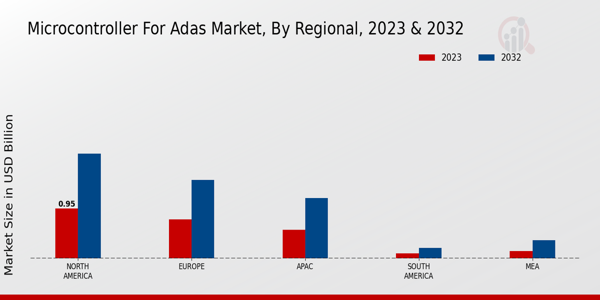The competitive insights of the Global Microcontroller for Advanced Driver Assistance Systems (ADAS) Market reflect a rapidly evolving technological landscape. The demand for advanced microcontrollers is driven by the increasing focus on safety, automation, and enhanced driving experiences in the automotive sector.
As automakers prioritize features such as lane-keeping assistance, adaptive cruise control, and automated parking, microcontrollers are pivotal in managing and processing data from sensors and cameras in real time.
The market is marked by strategic partnerships, investments in research and development, and the ongoing evolution of automotive electronics. Key players in this field are striving to innovate while also addressing challenges such as power efficiency, cost constraints, and the integration of artificial intelligence algorithms.
Imagination Technologies has established a significant presence in the Global Microcontroller for ADAS Market primarily through its innovative architecture that delivers high-performance and low-power solutions vital for automotive applications.
The strength of Imagination Technologies lies in its ability to design microcontrollers that seamlessly integrate with a variety of sensor technologies, enabling advanced processing capabilities essential for ADAS functionalities. The company focuses on providing flexible and scalable solutions, allowing manufacturers to customize their microcontroller technologies according to specific project needs.
Furthermore, Imagination Technologies benefits from its robust intellectual property portfolio, which enhances its competitiveness by offering unique features that differentiate its products in a crowded market. The emphasis on energy-efficient designs also positions the company favorably as the auto industry increasingly seeks to enhance vehicle fuel efficiency and reduce emissions.
ON Semiconductor plays a crucial role in the Global Microcontroller for ADAS Market, primarily known for its extensive suite of semiconductor solutions tailored for automotive applications. The company has a strong reputation for reliability and performance, which is critical in the ADAS sector, where safety is paramount.
ON Semiconductor's strengths lie in its comprehensive product offerings, including advanced microcontrollers that integrate seamlessly with numerous automotive systems. The company also has a strong focus on innovation, frequently updating its product lines to keep pace with the rapid advancements seen within the automotive electrification and automation domains.
Additionally, ON Semiconductor engages in strategic collaborations with automotive OEMs and tier-1 suppliers, which enhances its market presence and strengthens its relationships within the industry.
This collaborative approach enables ON Semiconductor to effectively meet the diverse needs of automotive manufacturers, thereby consolidating its position within the competitive landscape of the Global Microcontroller for ADAS Market.

















Leave a Comment